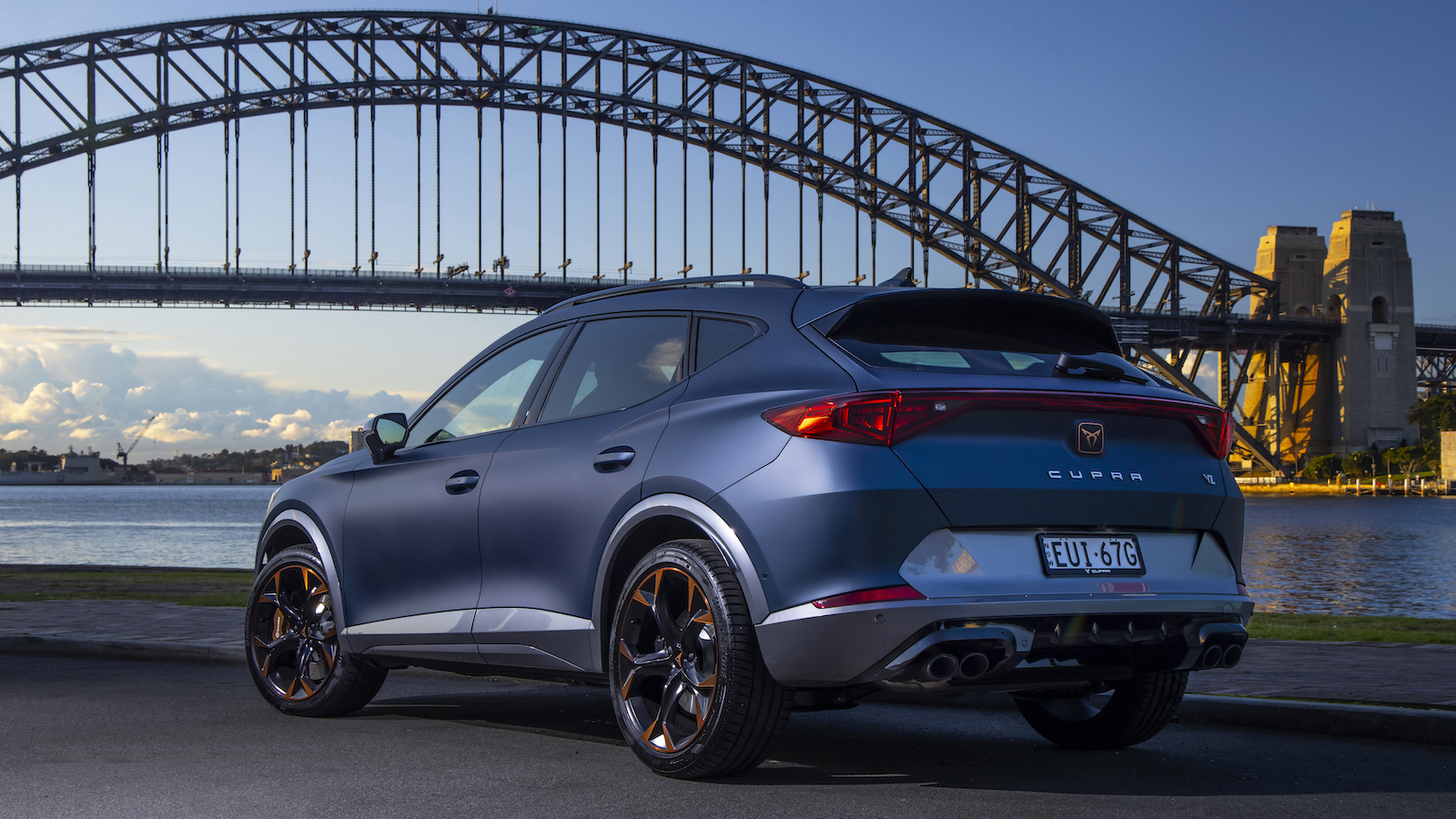
It’s always exciting when a new car brand launches in a market – and Spanish performance car brand CUPRA is especially exciting.
Australia, despite its geographical isolation and relatively small population, has always had one of the most diverse car markets on the planet. There are over 50 different mainstream brands active in Australia – not to mention the countless tuning houses, bespoke manufacturers and importers that also add to the rich mix of cars on our roads.
But not every brand can survive such a competitive market. Over the years, brands have come and gone, with the automotive landscape in constant flux. Opel, for instance, only lasted a year in Australia – one of General Motors’ biggest failures. Other brands that similarly threw in the towel include Daihatsu (part of the Toyota Group) or Smart (part of Mercedes-Benz).
So eyebrows were immediately raised when Volkswagen Group brand CUPRA announced it was heading Down Under. Could a completely unknown brand from the other side of the planet – one that’s from a company that already has many of its marques active in market – succeed in Australia?
Well, having driven three of CUPRA’s launch models earlier this year, I’m confident saying that CUPRA has a very bright future ahead of it in Australia.
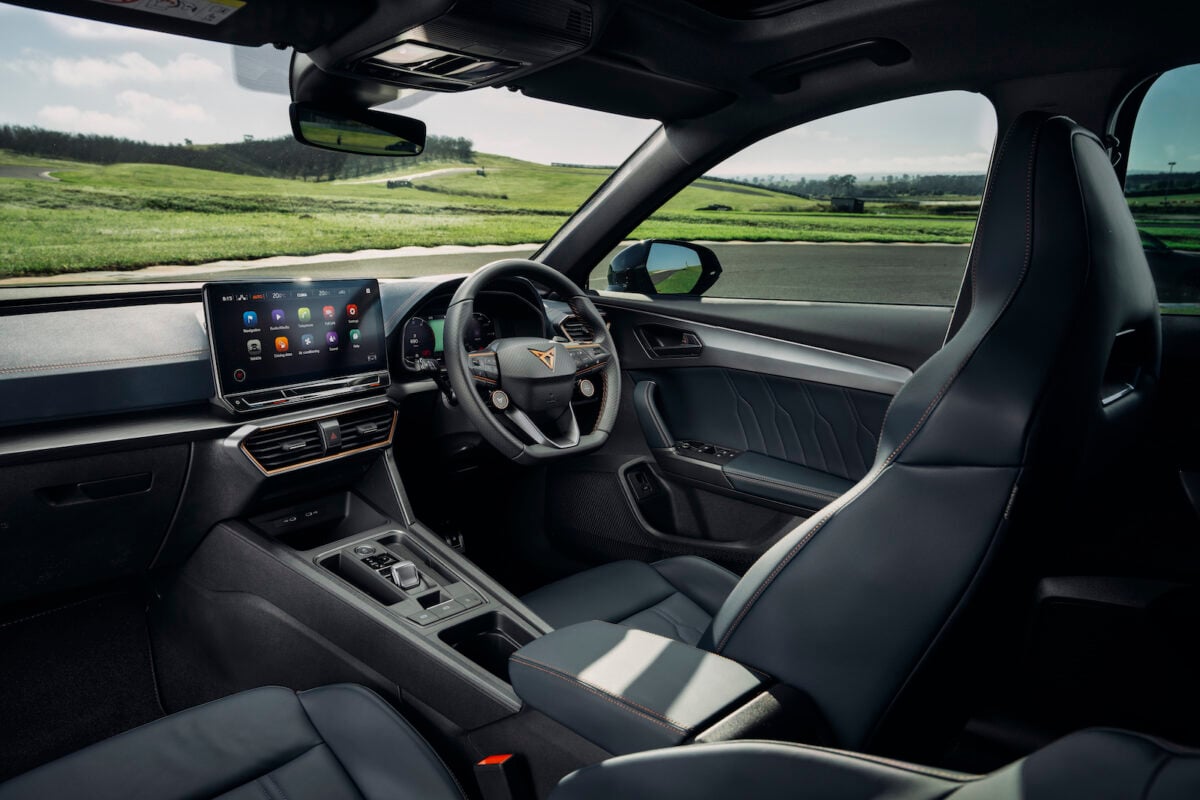
If you haven’t heard of CUPRA, we don’t blame you – the brand is only four years old. Well, only technically. CUPRA is the performance division of Spanish carmaker SEAT, one of Europe’s most successful car brands – making it akin to BMW’s M division or Mercedes’ AMG. SEAT cars were briefly sold in Australia through Volkswagen dealerships between 1995 and 1999, but never had a standalone dealer network or significant market presence.
In 2018 CUPRA was turned into a standalone marque, and given a huge amount of operational freedom by Volkswagen. That’s why just CUPRA, and not both SEAT and CUPRA, is launching in Australia. CUPRA sees itself as an unconventional challenger brand; leveraging the fact it’s not constrained by history to offer something very different to the Audis and Škodas Aussies love so much.
That said, the VW Group influence is obvious when you drive one of these cars – which is by no means a bad thing.
CUPRA sits somewhere between Volkswagen and Audi in terms of luxury, features, performance and refinement, something which is reflected in its pricing (which is actually exceptionally sharp).CUPRA’s angular, youthful aesthetic also has much in common with another VW Group stablemate, Lamborghini… Again, we’re not complaining. The value proposition of CUPRA is exceptionally strong, which is perhaps the brand’s biggest weapon. The fact that they are part of the VW Group is also reassuring for consumers, as thanks to parts sharing and so on, they’re not a completely unknown quantity.
Its other big differentiating factor is its focus on electrification. All three of the models they’ve launched in Australia with – Ateca, Formentor and
León – can be had as a plug-in hybrid. Moreover, their fourth launch model, the CUPRA Born, which will be joining the lineup next year, is a full battery electric vehicle and will be the first small VW Group EV to arrive in market.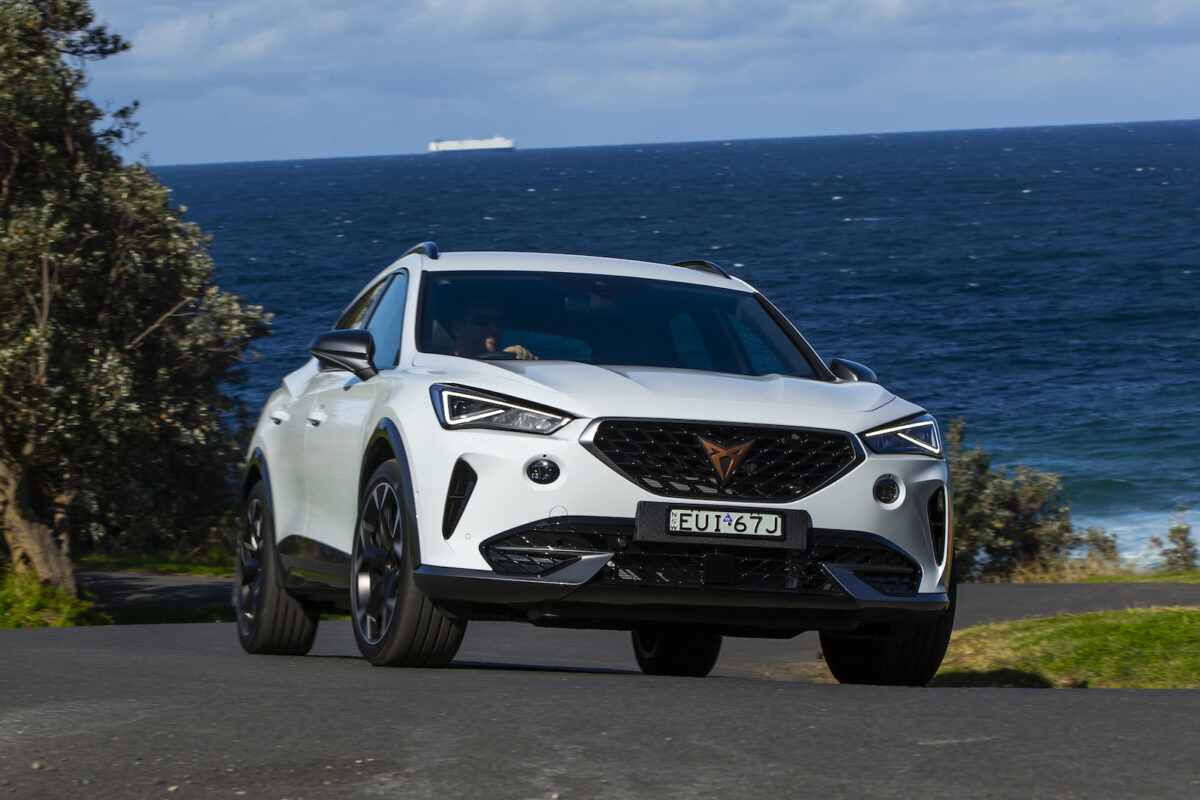
This isn’t by accident. CUPRA’s focus on e-mobility is important as a branding and positioning exercise, sure, but it also reflects the forward-thinking nature of the brand. It’s not just another Volkswagen, it’s something different.
But how do they drive? Let’s kick things off with the CUPRA Formentor, the brand’s flagship model and easily their most unique vehicle. This lithe coupé SUV is the first car designed specifically for the marque – meaning there’s no SEAT equivalent.
While the Formentor does share VW’s MQB Evo platform with cars like the Audi A3, SEAT/CUPRA León, Škoda Octavia and Volkswagen Golf, its slightly higher ride height, larger size and more aerodynamic form factor make it feel very different from its stablemates.
I’ve always hated the whole idea of c
oupé SUVs (or four-door coupes, or four-door shooting brakes…) but the Formentor is the first car that really nails that characterisation, in my opinion. Despite riding higher than a hatchback it actually feels low and swoopy like a proper coupe, something which is only reinforced by its planted, dynamic handling.It’s actually a masterclass in packaging, as it feels like a much smaller car than it is. At the same time, it’s more comfortable for passengers than a normal hatchback while feeling musclier than a hatchback or crossover. No other vehicle on the market really feels like a Formentor, which is exactly what you want from a new car and brand.
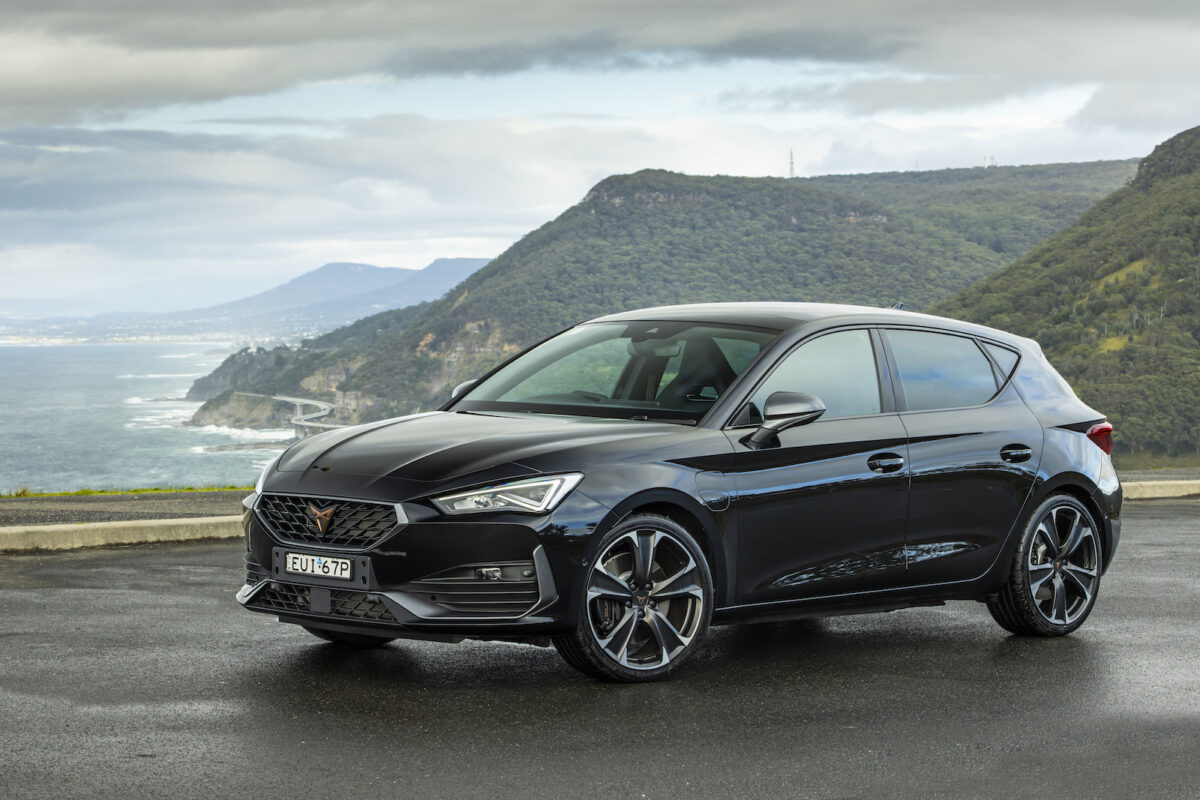
That said, the CUPRA León – which as mentioned above, shares a platform with the Formentor as well as other hatchbacks from the VW Group – is by no means a ‘same-y’ drive. If anything, it was my favourite of the three to drive.
The top-spec
León VZx features a fairly familiar 2.0L TSI engine which makes 221kW, which is the same as the Mk7 Golf R, is 41kW more than the current Mk8 Golf GTI, 8kW less than the Audi S3 and 14kW less than the Mk8 Golf R. (The entry-level VZ and the plug-in hybrid VZe match the Mk8 GTI in power).RELATED: The New Audi S3 Is The Swiss Army Knife Of Sports Cars
Yet the
León VZ is cheaper than a GTI, and the VZx is significantly cheaper than a Golf R… While also looking better. It’s gauche to talk about value but the León represents amazing value no matter what flavour you get it in.It’s also a hoot to drive. Maybe it’s just the tune or the exhaust characteristics but the
León seems wilder and louder than a GTI or even an R. More importantly, it lacks the slightly conservative aesthetic of its VW siblings. It’s an absolute screamer of a hot hatch and a no-brainer as far as I’m concerned.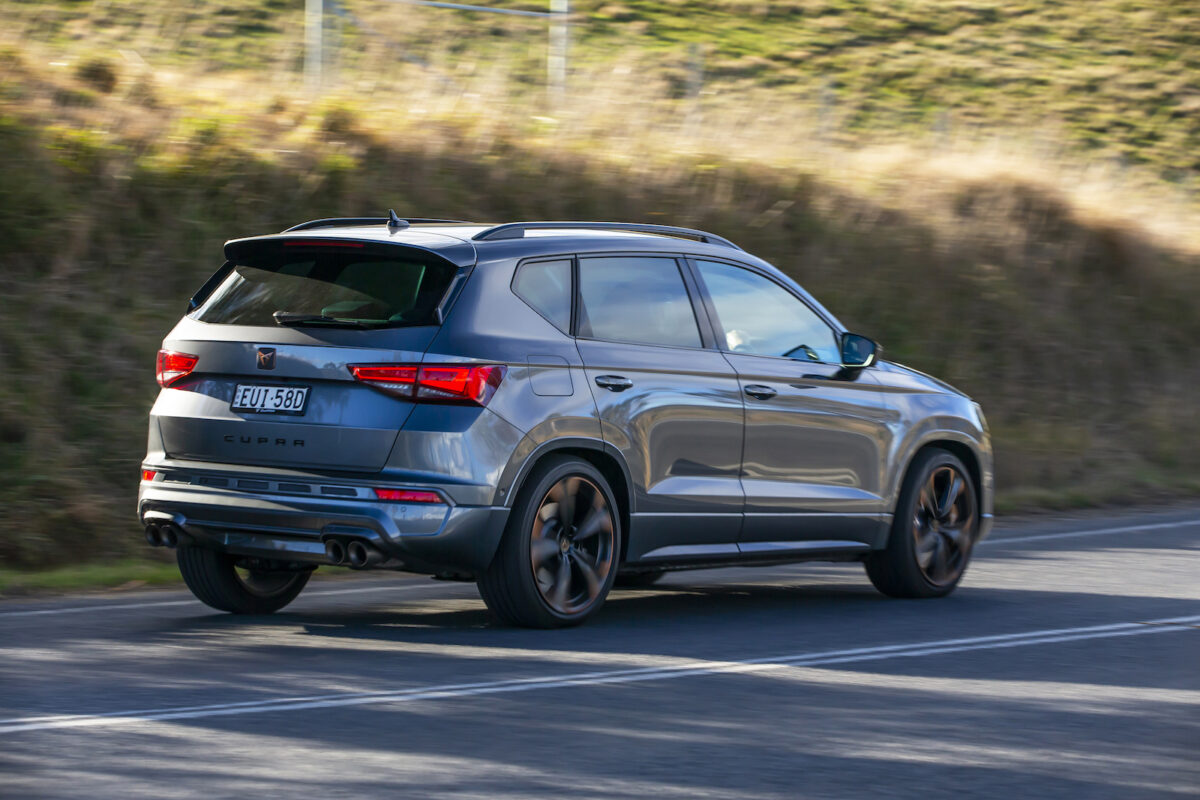
The final of the three launch cars, the CUPRA Ateca, was a real surprise for me. I was expecting the Ateca, which is a larger, more conventional crossover SUV that shares an MQB A1 platform with the Volkswagen T-Roc and
Škoda Karoq, to be the least interesting car of the three to drive – but I was wrong.The Ateca actually shares the same running gear as the
León and therefore also the Golf GTI and R, so this rather large SUV properly hauls ass. You can even get some truly fruity quad Akrapovič exhaust as a factory option on the Ateca, which makes it absolutely sing.It’s the most practical of CUPRA’s three models thanks to its size and 485L boot, but I also think it’s the best-looking, too. In a sea of bland crossovers, the Ateca stands out as a particularly nifty motor.
RELATED: Peugeot’s Latest SUV Is Weird Like A French Car & Luxurious Like A German One
As you might have been able to guess, I was exceptionally impressed by CUPRA’s three launch models. They all bring something different to the table, both within the already rather competitive VW Group stable as well as the Australian car market more broadly.
CUPRA coming to Australia is no accident. We’re a wealthy, open-minded and competitive car market – as CUPRA CEO Wayne Griffiths told DMARGE, “if you can succeed in Australia, you can succeed anywhere”. Australia might be literally on the other side of the planet to Spain, but there’s a reason CUPRA’s making the journey.
Now they just need to wait and see if us Aussies will take a punt…2022 CUPRA Australia prices
Read Next
- New Toyota LandCruiser Proves Australians Don’t Need V8s Anymore
- BMW’s New M3 Made Me Reconsider The #1 Sports Car Must-Have
The post CUPRA Is The Most Exciting Car Brand Australia’s Seen For Decades appeared first on DMARGE.


0 Commentaires